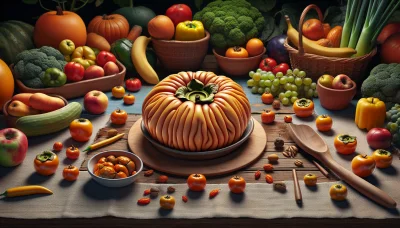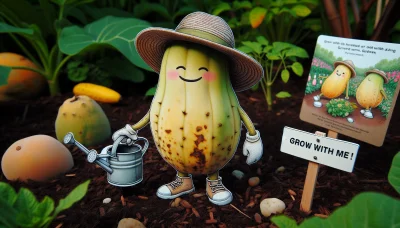What does rambutan taste like Quiz
Test Your Knowledge
Question of
What Does Rambutan Taste Like?
Rambutan is a tropical fruit native to Southeast Asia, known for its unique and striking appearance. It features a hairy or spiky outer skin that encases a juicy, translucent flesh similar in texture to a grape but slightly firmer. The taste of rambutan is often described as sweet and slightly acidic, with a flavor reminiscent of a combination of lychee, pear, and grape. Its sweetness and refreshing qualities make it a popular choice in its native regions and among those who seek exotic fruits. The name "rambutan" itself is derived from the Malay word for hair, a nod to the fruit's distinctive, hair-like spikes.
The Unique Taste of Rambutan
Rambutan, a tropical fruit native to Southeast Asia, is celebrated for its distinctive taste that tantalizes the palate of many fruit enthusiasts around the world. At first glance, its hairy exterior might seem intimidating, but once you delve into its juicy, translucent flesh, you are greeted with a flavor that is often described as a harmonious blend of sweet and sour. The taste is reminiscent of grapes with a slight hint of strawberry and pear, enveloped in a floral undertone that makes it truly unique. Its texture is similar to that of a grape but slightly firmer, providing a satisfying crunch with each bite. The succulent sweetness coupled with a subtle tartness makes rambutan a refreshing treat on a hot day, leaving a lingering taste that invites you for more.
How to Eat Rambutan
- Select ripe rambutan. Look for fruits with bright red skin, although some may be yellow or orange. The spiky "hairs" should be firm, not mushy or blackened.
- Hold the rambutan firmly and make a cut in the skin with a sharp knife. Be careful to only cut the skin and not deep into the flesh.
- Peel away the skin. Once you've made a cut, you can use your fingers to peel the skin off the fruit. It should come off easily if the fruit is ripe.
- Remove the fruit from the seed. You can do this by biting into the fruit and gently pulling it away from the seed, or by cutting the flesh off with a knife.
- Enjoy the fruit. The flesh of the rambutan is juicy and sweet, with a flavor that is somewhat similar to grapes.
- Discard the seed. The seed of the rambutan is not edible, so make sure to throw it away after enjoying the fruit.
Growing Rambutan in Your Garden
Rambutan trees thrive in warm, tropical climates similar to their native Southeast Asia. They require a temperature range of 22 to 30 degrees Celsius and high humidity to flourish. These trees do not tolerate cold temperatures and can be severely damaged by frost. When it comes to soil, rambutan trees prefer well-drained, loamy soils with a high organic matter content. The soil should have a pH between 5.5 and 6.5. Adequate rainfall or irrigation is crucial, as rambutan trees need plenty of water, especially during the fruiting season, to produce juicy fruits. However, it's important to ensure that the soil is not waterlogged to prevent root rot.
Caring for Your Rambutan Tree
- Watering: Regularly water your rambutan tree, especially during dry periods. Young trees need watering every 2-3 days, while established trees require once a week.
- Fertilizing: Apply a balanced fertilizer every 3-4 months to provide essential nutrients. Use organic compost or manure to enrich the soil around your tree.
- Pruning: Prune your rambutan tree to remove dead or diseased branches and to shape the tree. This encourages better air circulation and fruit production. Pruning is best done after the harvest season.
- Soil: Ensure the tree is planted in well-draining soil to prevent root rot. A pH between 5.5 and 6.5 is ideal for rambutan trees.
- Sunlight: Rambutan trees thrive in full sunlight. Ensure your tree gets at least 6 hours of direct sunlight daily.
- Pest and Disease Management: Regularly inspect your tree for signs of pests and diseases. Use organic pesticides or fungicides when necessary, and remove affected parts promptly to prevent spread.
- Mulching: Apply mulch around the base of your tree to help retain soil moisture, regulate soil temperature, and reduce weed growth.
Harvesting and Storing Rambutan
Rambutans are ready for harvesting when their skin turns from green to a vibrant red or yellow, depending on the variety, and the spiky hairs on the skin take on a firm and pliable texture. It's crucial to gently twist and pull the fruit from the branch to avoid damaging the stem. After harvesting, the best practice for storing rambutans to maintain their freshness involves keeping them in a perforated plastic bag or container in the refrigerator. This method helps to retain moisture while allowing air circulation, extending their freshness for up to two weeks. Avoid washing the fruits before storage to prevent moisture accumulation, which can lead to premature spoilage.
Rambutan Recipes and Uses
| Recipe/Use | Ingredients | Instructions |
|---|---|---|
| Rambutan Smoothie | Rambutan, banana, coconut milk, honey | Blend peeled rambutans, banana, coconut milk, and honey until smooth. |
| Rambutan Salad | Rambutan, mixed greens, avocado, vinaigrette | Mix sliced rambutans, mixed greens, diced avocado, and vinaigrette in a bowl. |
| Rambutan Salsa | Rambutan, red onion, jalapeño, lime juice, cilantro | Combine chopped rambutans, red onion, jalapeño, lime juice, and cilantro. Season with salt. |
| Rambutan Curry | Rambutan, coconut milk, curry paste, vegetables | Cook curry paste, add vegetables and coconut milk, simmer, then add peeled rambutans last. |
| Rambutan Cocktail | Rambutan, vodka, lime juice, simple syrup | Muddle rambutan in a shaker, add vodka, lime juice, simple syrup, shake, and strain into a glass. |












